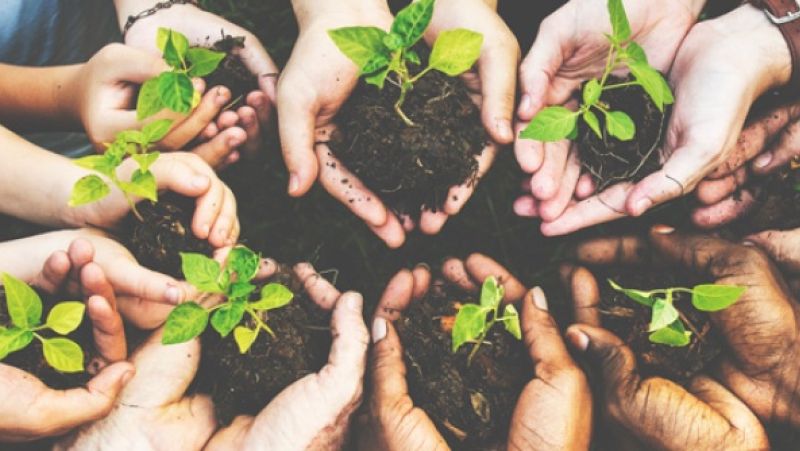
By Njeri Clement
Director of Cultural Fluency, Equity and Inclusion
Global poverty had been decreasing before COVID-19, but the pandemic interrupted this trend by disproportionately harming populations facing poverty through systemic inequalities in employment, wage-earning, health, and wellbeing (U.S. Department of Health & Human Services, 2021). The decline in income, disruptions in agricultural input markets, farm production, marketing, and distribution of food has left many unable to afford the food they need (Laborde et al., 2021). The pandemic’s health and economic effects have also cut across and deepened socioeconomic divisions in higher education (Smith & Reeves, 2020).
In a survey of approximately 1500 students at one of the largest public institutions in the United States, it was shown that there is a negative impact on higher education as a result of the pandemic as students lost wages, job offers, internships due to business closures, greater than average food insecurity, and generalized anxiety (Aucejo et al., 2020; U.S. Department of Education, 2021). For this reason, I will attempt to shed light on the impact of the COVID-19 pandemic on college students and share resources that SCTCC students can use.
We start by looking at how the pandemic upset an already difficult balancing act for the Smith family, leaving them exhausted:
For John Smith* a 33-year-old father of five children, age 5 months to 11 years old — the breaking point came last year. Before the health crisis, Smith and his wife juggled their large family, several jobs and studies at a Community College. The dominoes started tumbling when the pandemic reached his small community. First, the school system where the Smiths had worked as substitute teachers shut down. Then, that same day, their three school-age children were sent home to learn remotely. Their community college also suspended in-person classes. The Smiths struggled to keep up their own schoolwork while making sure the children did theirs, overloading the family’s home computer capacity and their multitasking skills. Overwhelmed, Smith dropped two classes and decided not to re-enroll for the coming year.
Many college students experienced similar challenges and struggles in balancing work-school- life responsibilities. This is because the outbreak of COVID-19 affected students’ lives as they were asked to self-quarantine in their homes to prevent the spread of the virus. The closure of educational institutions called for a rapid transition from in-person learning to learning online (Kapasia et al., 2020).
The lockdown resulted in serious implications on mental health, including frustration, stress, and depression (Chaturvedi et al., 2021). Social interactions with other students, staff, and instructors were interrupted. There were very few extracurricular activities such as sports, music, and activites, which play an important part of students’ identities, as they provide not only a tribe of others with common interests, but also create a sense of belonging.
One the most stressful aspects of the current situation is not knowing. We don’t know who has been or will be infected. We don’t know who might be a carrier, spreading the virus to others without even knowing it. We don’t know what the long-term effects of this pandemic will be. Facing so many unknowns heightens anxiety and calls for seeking the necessary help.
In its deep concern with poverty and its effects during this pandemic, SCTCC has several ways to help support students’ health, learning, and success. These support services include: the Cyclones Cupboard, the Center for Academic Success (tutoring), Wellness Resource Services, TRIO Student Support Services, IT support and equipment rentals, Academic Advising, Veterans Resources, the Multicultural Center, and many other services to keep our students connected and able to learn.
The challenge is great. The COVID-19 crisis has derailed many students’ best laid plans as they struggle to cover basic needs. Practical interventions such as student-centered teaching practices; good academic advising; great instructional design; thorough student orientation and financial workshops; and social support services are all proven strategies that make a difference and ensure an equitable opportunity for students to learn, connect, and thrive on our campus.
References:
- Aucejo, E. M., French, J., Ugalde Araya, M. P., & Zafar, B. (2020). The impact of COVID-19 on student experiences and expectations: Evidence from a survey. Journal of Public Economics, 191, 104271. https://doi.org/10.1016/j.jpubeco.2020.104271
- Chaturvedi, K., Vishwakarma, D. K., & Singh, N. (2021). COVID-19 and its impact on education, social life and mental health of students: A survey. Children and Youth Services Review, 121, 105866. https://doi.org/10.1016/j.childyouth.2020.105866
- Kapasia, N., Paul, P., Roy, A., Saha, J., Zaveri, A., Mallick, R., Barman, B., Das, P., & Chouhan, P. (2020). Impact of lockdown on learning status of undergraduate and postgraduate students during COVID-19 pandemic in West Bengal, India. Children and Youth Services Review, 116, 105194. https://doi.org/10.1016/j.childyouth.2020.105194
- Laborde, D., Martin, W., & Vos, R. (2021). Impacts of COVID‐19 on global poverty, food security, and diets: Insights from global model scenario analysis. Agricultural Economics, 52(3), 375–390. https://doi.org/10.1111/agec.12624
- Smith, E. & Reeves, R. (2020, September 10). Class Notes: The gender poverty gap, COVID-19’s impact on college students, and more. Brookings. https://www.brookings.edu/blog/up-front/2020/09/10/class-notes-the-gende...
- St Cloud Technical and Community College. (2022). Cyclones cupboard. St. Cloud Technical Community College. https://www.sctcc.edu/
- U.S. Department of Education. (2021). Education in a pandemic: The disparate impacts of COVID-19 on America’s students. https://www2.ed.gov/about/offices/list/ocr/docs/20210608-impacts-of-covid19.pdf
- U.S. Department of Health & Human Services. (2021). The impact of the first year of the COVID-19 pandemic and recession on families with low incomes. https://www.aspe.hhs.gov/sites/default/files/2021-09/low-income-covid-19...